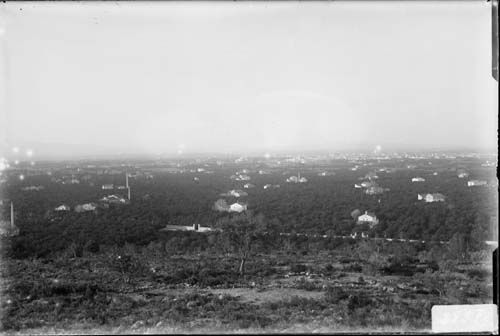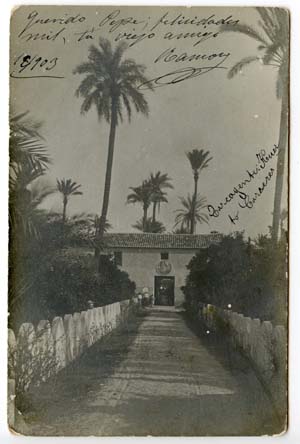
Orange trees are common in gardens for their aesthetic qualities. In Valencian cultural tradition, the concepts of orchard and garden are closely related. Early experiences in orange tree growing with a commercial purpose and large benefits date back to the late 18th century and can be found among upper-class circles. At the beginning, oranges were grown only in the towns of La Ribera and La Plana de Castellón. They developed very slowly at first and it was not until the mid 19th century that conditions were met for exportation to European countries. But from 1880 to the 1930s, orange trees became widespread all along the coastline between La Plana de Castellón and La Safor. Thanks to important financial benefits, the aesthetic qualities of orange trees as garden trees were spread all over a well tended landscape.
Orange groves were assigned an aesthetic value from the onset, as can be seen in the stories written, for several reasons, by Cavanilles, Madoz, Lassala, Bodí, the Countess of Gasparín, etc. At the beginning, this perception was only found in people working in different scientific areas or in foreign visitors. But it was during the golden age of citrus production, between 1880 and 1930 –especially in the transition from the 19th to the 20th century- that the bourgeoisie took the lead of the expansion of Valencian agriculture and orange production, drawing the attention of writers, artists, photographers and film producers who raised the orange grove to the category of landscape, transmitting values later assimilated by different social strata.
It is striking to see how diverse cultural manifestations come together in conveying a fairly similar idealised concept of the grove and in locating the grove landscape par excellence in Alzira and Carcaixent, where the high number of farms makes the scenery as sublime as to arouse aesthetic experiences that then come true as different artistic expressions.
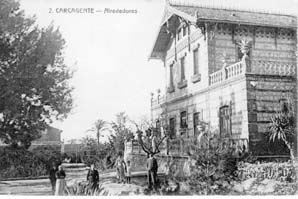
|
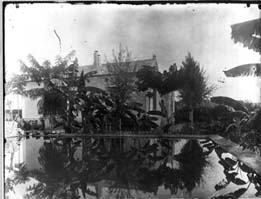
|
The exhibition takes us closer to orange groves and orange tree sceneries through the images of photography, literature and films between 1880 and 1930. The exhibits are structured into three blocks:
0.Audiovisual. Orange groves.
The ‘making’ of the Valencian Orchard. This section explains the shift from the use of orange trees as garden trees to the expansion of the orange trade, the bourgeois concept of orchard/grove and the foundations of its aesthetic value.
1. The orange grove.
The bourgeois standard orchard or garden consisted of an orthogonal walled plot with orange trees, crossed by two axes. Surrounded by an ornamental garden, the house was in the centre and next to it were the reservoir and an irrigation motor. The paths were ornamented by trees, palms and plants. The different elements that made up the standard bourgeois orchard are analysed in this section: orange trees, palm trees, cypress trees, the entrance patio, the house, water and the garden.
2. Panoramic views.
This section offers panoramic images of a landscape characterised by a single crop. Orange ‘forests’ from which farmhouses, palm trees, garden trees and water towers stand out. A scenery of trees and fields that could also be seen from the balconies of the houses or some natural elevations. For writers, the Muntanyeta del Salvador in Alzira was the best viewpoint.
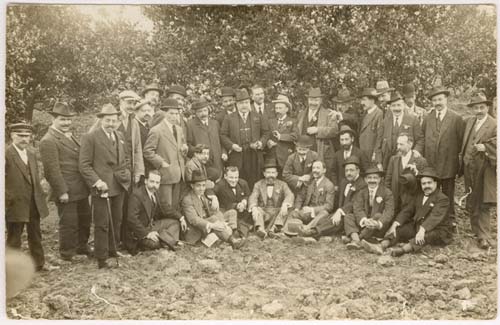
3. A landscape alive
This area shows us the relationship between the scenery and the people whose work and dedication made it possible. It is about the ‘señoritos’ (rich young men), their orchards being a symbol of social prestige, about their manor houses, where they would spend the summer with their families and friends, about dedicated farmers who took great care of their fields, about housewives who did their household chores but also worked at the packing house. In 1937 the exceptional circumstances of the Civil War prompted the Republic government to turn some farms into school camps for evacuated children fleeing from the bombing of Madrid. There, they managed to have a happy ideal stay, far from the horrors of the war.
4. Today’s reality
A source of inspiration for poets and writers in the first decades of the 20th century, the orange tree scenery also drew the attention of artists, photographers and film makers. The landscape remained more or less unchanged until the last decade, when it started to decline slowly, a trend that has been more noticeable in recent years. The comparison of today's images with those of the rest of the exhibition is a graphic testimony of what survived but is now threatened.
5. A look ahead
The cycle of oranges as an intensive crop is now completed in the counties where it was first developed. This has opened the door to deep short-term landscape transformations which can already be seen and with a varying scope. We are undergoing important changes; the triumph of some of the alternatives will mark a new landscape image for the new cycle. This exhibition area includes current images of such alternatives: farming land given new land uses, new crops like avocado, custard apple or persimmon, trees for timber, leisure or agritourism.
